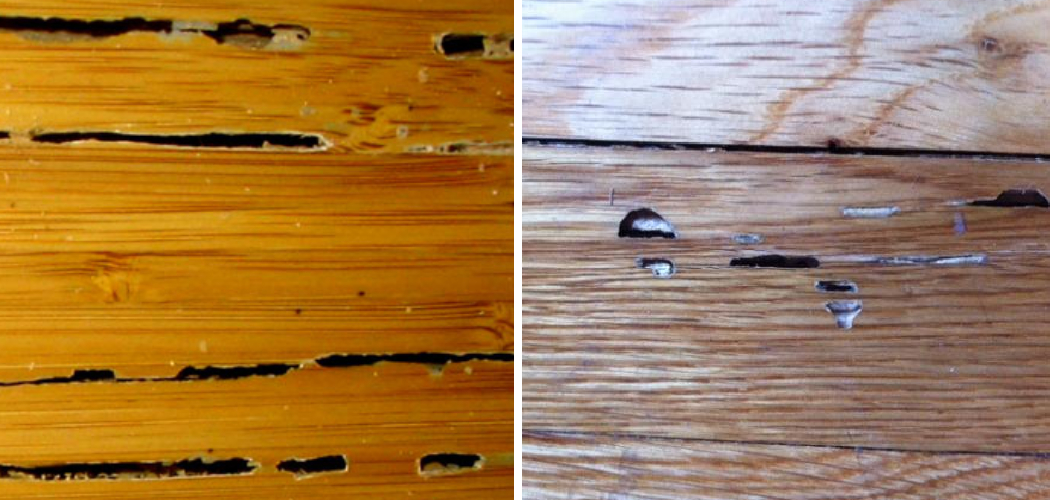Are you dealing with termites in your hardwood floors? If so, you need to take fast action. Termites can cause major damage to wood structures, including hardwood floors if left unchecked.
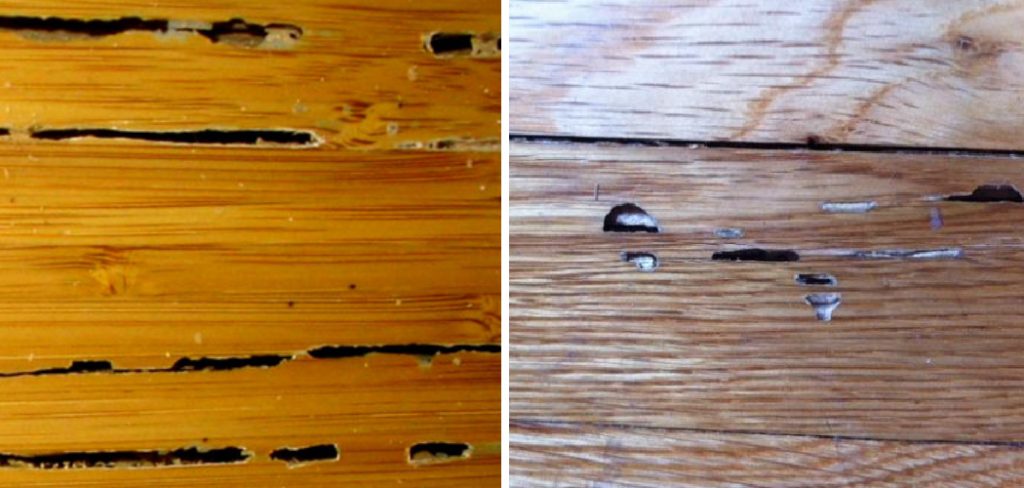
When it comes to protecting your hardwood floors from termites, a proactive approach is best. Failing to treat an infestation can cause significant damage and cost thousands of dollars in repairs.
The key to avoiding costly damages caused by termites is knowing about the signs and preventing them before they become a problem. Whether you’ve already seen signs of an infestation or want to take steps to protect your hardwood floors from these little wood-eating creatures, here’s what you need to know.
In this article, we’ll cover how to treat termites in hardwood floors as well as steps you can take now to effectively treat organisms below or crawling on the surface of your flooring.
What Will You Need?
Before getting started, you’ll need to gather the right supplies. Depending on your type of termite infestation, you may need to buy a few items to treat the problem safely and effectively. The following supplies are important for treating termites on hardwood floors:
- Termiticide (a pesticide specifically designed to kill wood-eating insects like termites)
- Plastic drop cloths
- Protective clothing, including gloves and a respirator mask
- Broom or vacuum
- Hammer and chisel for drilling holes into infested wood
- Brush or paintbrush for applying the termiticide solution
These supplies can be found at most home improvement stores. Make sure to read all labels carefully and follow instructions as directed on each product you use.
Once you have your supplies ready, it’s time to start treating your hardwood floors.
10 Easy Steps How to Treat Termites in Hardwood Floors
Step 1. Identify the Type:
Identify the type of termite infestation. Different types of termites require different treatments, so you’ll need to know what kind you’re dealing with in order to treat the problem effectively. If you’re not sure what type of termite infestation you have, contact your local pest control specialist for help.
Step 2. Create a Treatment Plan:
Create a treatment plan for your hardwood floors based on your termite infestation type. Ensure that your plan addresses all possible areas of concern and includes steps for prevention and treatment. As part of your treatment plan, you may need to drill small holes into the infested wood to apply a termiticide solution directly.
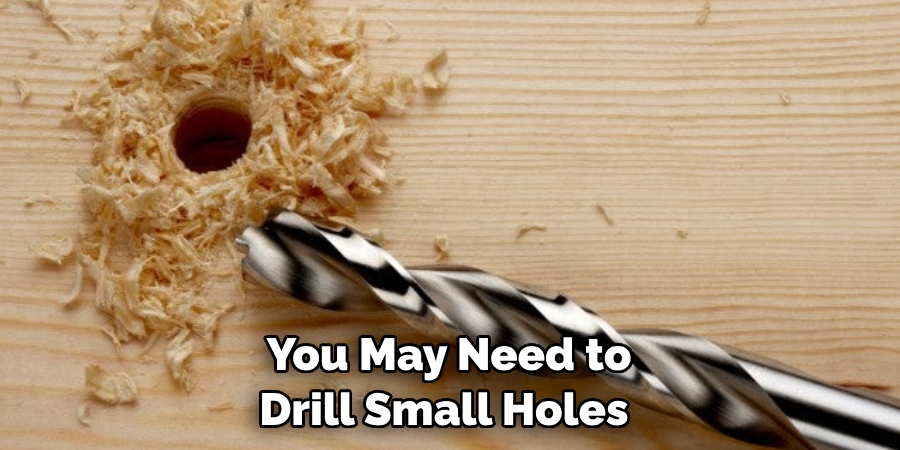
Step 3. Prepare Your Home:
Before treating the infested wood, take the time to prepare your home properly. Cover furniture and other items with plastic drop cloths to protect them from any termiticide solution used during treatment. Don’t forget to turn off the air conditioning units in the room before beginning treatment.
Step 4. Drill Holes:
Drill small holes into any wood infested with termites using a hammer and chisel. This will allow the termiticide to penetrate more deeply into the wood, killing any termites hiding inside. If you haven’t already done so, now is also a good time to inspect other wood in your home for signs of an infestation.
Step 5. Apply Termiticide:
Once you’ve drilled holes into infested wood, it’s time to apply the termiticide solution. Make sure to wear protective clothing and a respirator mask while applying this solution, as it can be hazardous to your health if inhaled or ingested. Don’t forget to read the directions on the termiticide product label before using.
Step 6. Monitor Progress:
Monitor treatment progress by regularly checking for signs of new termite activity in and around your hardwood floors. If you see any signs that the treatment is not working, contact a professional pest control service immediately. You can also call your local extension office for advice on properly monitoring and treating termites on hardwood floors.
Step 7. Seal Cracks:
Once the termite infestation has been treated, take the time to seal any cracks or gaps in your hardwood floors that could attract new termites to your home. Additionally, inspect your home’s foundation and exterior walls for signs of termite activity. Be careful to seal any cracks or gaps that could be allowing termites in.
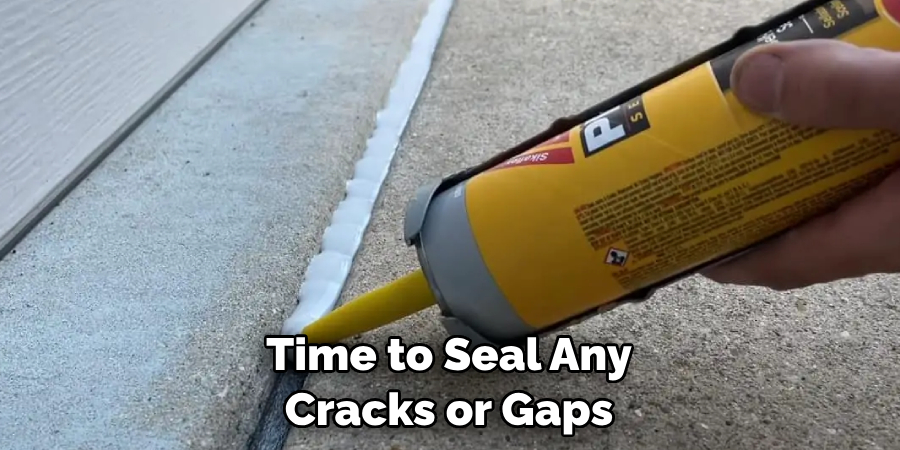
Step 8. Replace Damaged Wood:
Wood that has become severely damaged should be removed and replaced with new, non-infested wood as soon as possible. This will help prevent further damage and discourage future infestations of termites. Ensure the new wood is treated with a termiticide to protect it from future termite invasions.
Step 9. Clean Up:
Clean up any remaining residue from the treatment process using a broom or vacuum cleaner. Make sure to properly dispose of all waste materials according to local regulations for dealing with hazardous materials. Keep in mind that some termiticides are highly toxic and must be handled with extreme caution.
Step 10. Prevent Future Infestations:
Once the infestation has been treated, prevent future infestations by regularly removing debris and standing water around your home. Utilizing traps or baits designed specifically for termites can be a helpful way to detect new activity before it becomes a major problem. Remember to inspect any wood coming into contact with your hardwood floors before bringing it into the house.
By following these easy steps, you can protect your hardwood floors from termite damage and keep them looking beautiful for years. If you are unsure how to treat an infestation or think the problem might be more serious than it appears, contact a professional pest control service for help.
5 Additional Tips and Tricks
- Inspect your home’s perimeter regularly to ensure termites are not entering through foundation cracks or other openings.
- Ensure vents and other air sources in the home are screened, as this can help prevent termite infestations.
- Remove any dead wood around the home that could be an ideal breeding ground for termites.
- Check for signs of termite activity on your hardwood floors, such as mud tubes or damage to the wood itself.
- If you suspect a termite infestation, contact a professional pest control service to inspect and treat the problem immediately before it worsens. These steps can help keep your hardwood floors safe from expensive damage caused by termites!
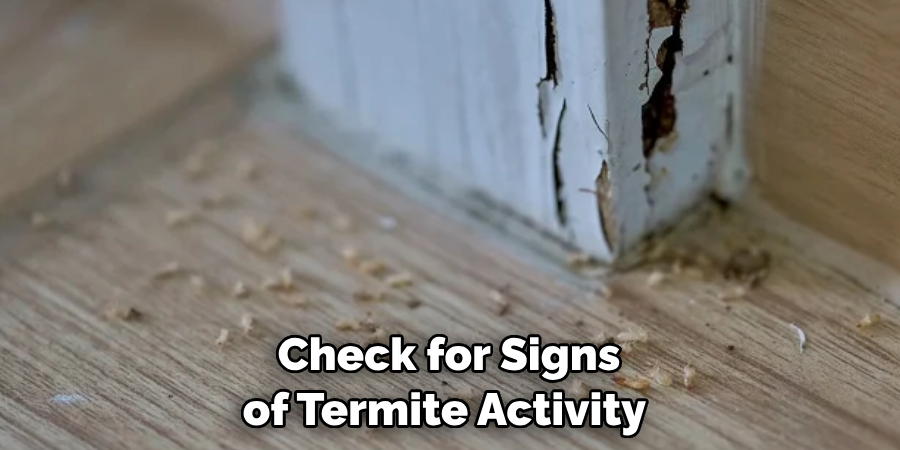
Remember, the best way to treat termites on hardwood floors is to prevent them from entering your home in the first place. Taking a few simple steps to keep your home safe can help you avoid costly problems!
5 Things You Should Avoid
- Do not use over-the-counter chemicals to try and control the termite population. These are often ineffective and can cause more harm than good.
- Avoid using wood or cardboard for mulch around your home, as this is a common breeding ground for termites.
- Do not leave anything wet or moist near hardwood floors, as this can create an environment that is conducive to termite infestations.
- Avoid leaving wood debris on the floor, as it may serve as a food source for termites.
- Do not ignore signs of a potential infestation; contact a professional right away if you suspect there might be an issue with termites in your home! Taking prompt action can save you money in the long run.
Taking these extra precautions will help ensure that your hardwood flooring is protected against termite damage now and in the future!
Does Vinegar Kill Termites?
The short answer is no, vinegar does not kill termites. In fact, it may even attract them to the area where you are using it as a natural remedy. Vinegar is an acidic substance that has been known to help control other pests, such as ants and fleas.
However, its effectiveness against termites is limited and should only be used as a last resort. Instead of relying on vinegar as a solution, use professional pest control services or other preventative measures to keep your home safe from termite infestations.
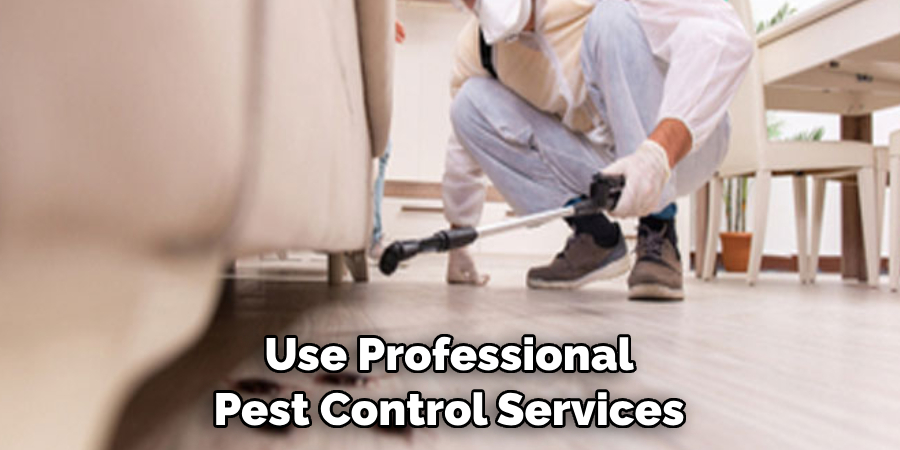
If you are looking for a more effective way to treat termites on hardwood floors, contact your local professional pest control service right away – they can recommend the best treatments for your situation.
Conclusion
In conclusion, termite infestations on hardwood floors can be challenging to detect and treat. However, any problem can be managed with the timely detection and the correct treatment methods based on the extent of the infestation, any problem can be managed. It is important to remember that you should always consult a professional if you suspect an infestation.
Homeowners should also ensure proper maintenance of their hardwood floors, including regularly checking for signs of damage, repairing minor cracking or loose boards, and eliminating sources of moisture like leaky pipes. By following this advice, you can ensure that your home remains termite-free while keeping your hardwood floors looking beautiful and pristine.
Hopefully, the article on how to treat termites in hardwood floors has given you some useful tips and guidance to help prevent and treat any potential infestations. With the right knowledge and proactive measures, you’ll be able to keep your hardwood flooring free of termite damage for years to come!
